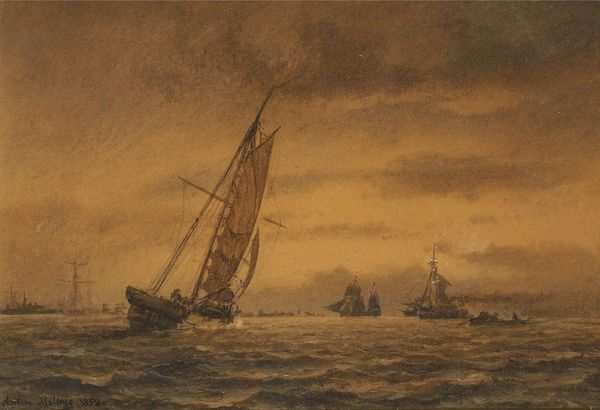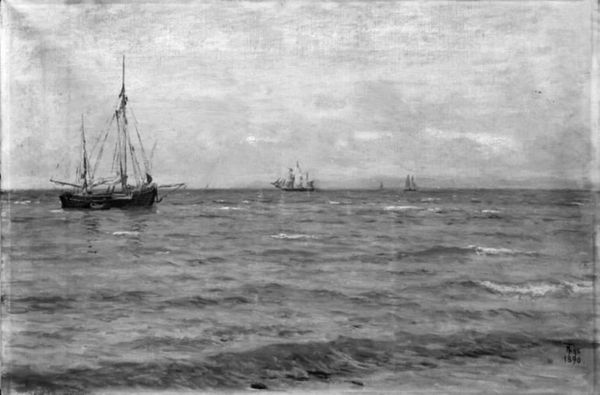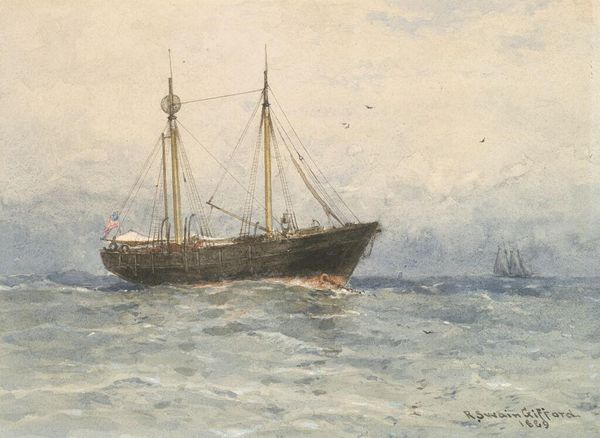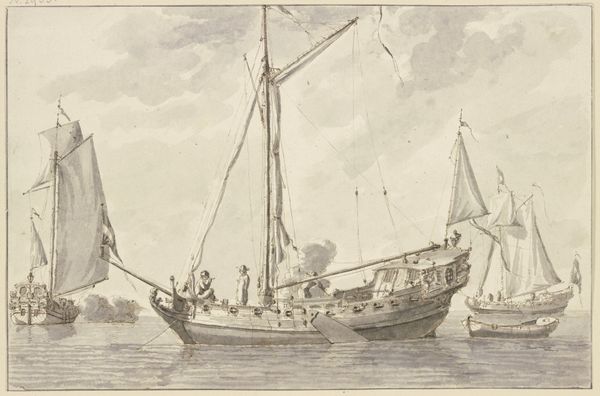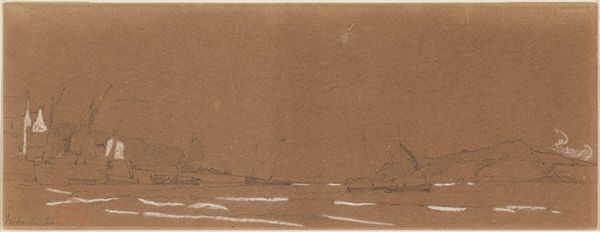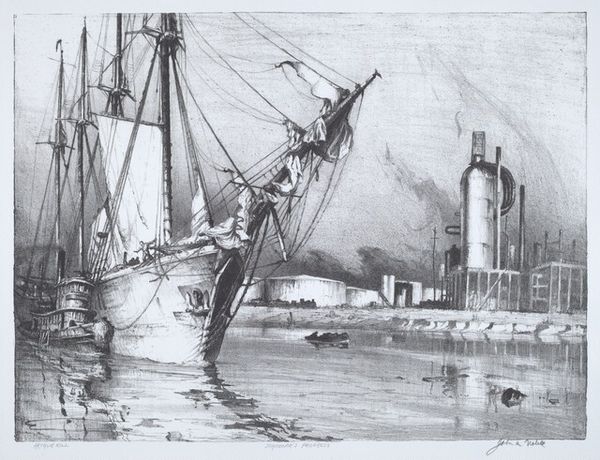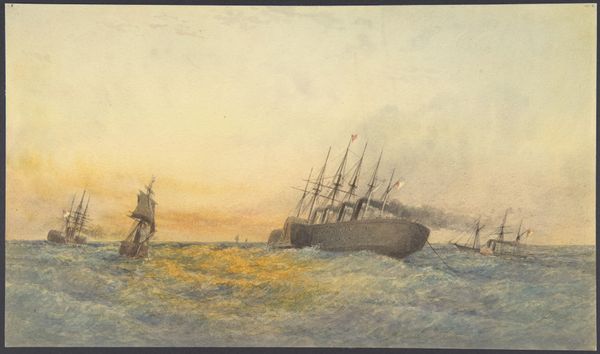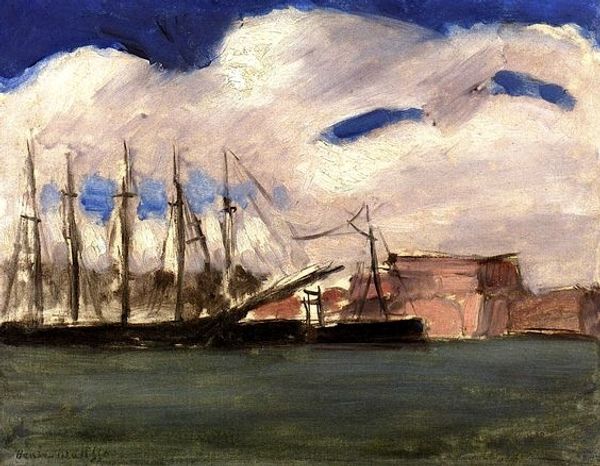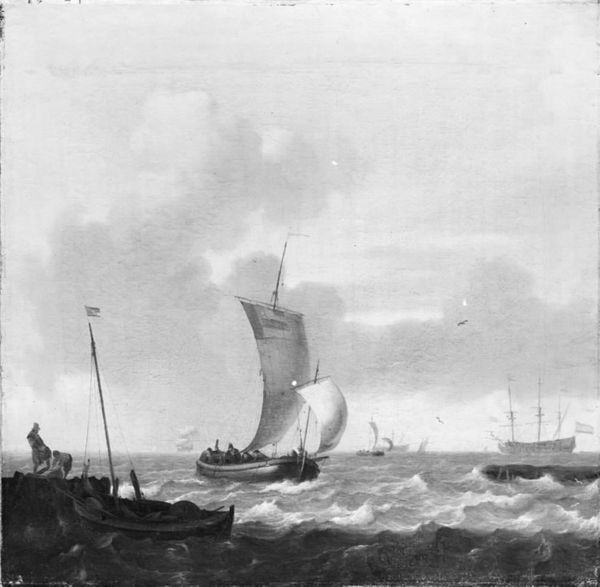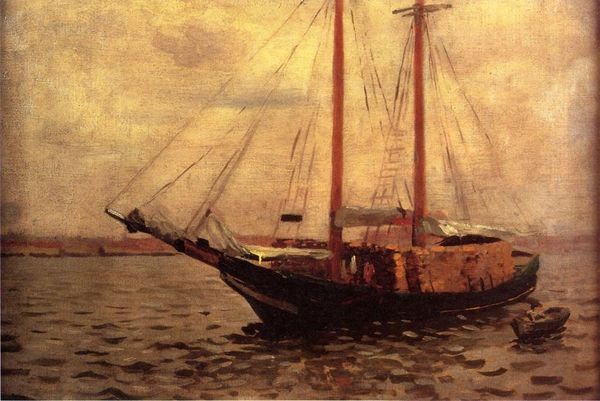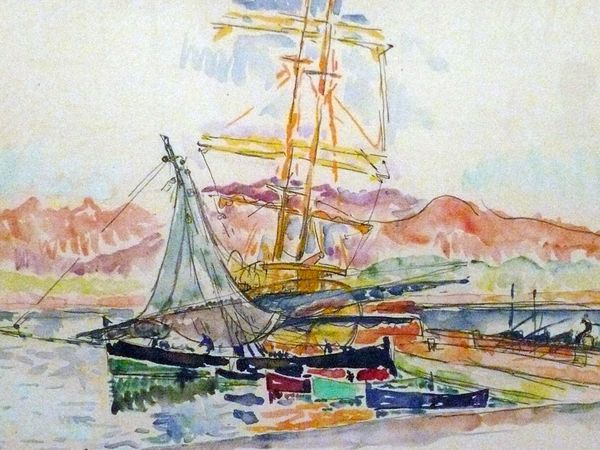
Copyright: Public domain
Editor: We're looking at Isaac Levitan's "Fresh Breeze. Volga." from 1890, made with oil paint. There's something so serene about the composition. The muted blues and browns create a very calming atmosphere. How do you interpret this work, focusing on its form? Curator: Formally, the painting demonstrates a masterful use of color and light to convey spatial depth. Observe how Levitan employs a restricted palette, primarily blues, browns, and creams, to achieve tonal unity. The atmospheric perspective is also critical; note how forms become less distinct and colors fade into the background, creating a sense of vastness. What compositional elements contribute to its sense of tranquility, would you say? Editor: Well, I see the horizontal lines of the water and land create stability, and then there's the repetition of vertical masts. But those soft, blurry clouds seem to add movement. Curator: Precisely. The subtle interplay of these horizontal and vertical elements structures the visual space, yet the loose brushwork disrupts a static reading. Semiotically, these techniques engage with the core structure of impressionism and the limits of vision itself. Editor: So, it's not just a pretty picture, but a carefully constructed visual experience? Curator: Exactly. Every brushstroke, every color choice, contributes to the painting’s formal logic, enacting a very intentional organization of the image and the impression that it leaves upon us. Editor: I’ve definitely learned to look beyond the surface of the image to see how color, composition and brushwork give meaning to this painting! Curator: And hopefully, an enriched viewing experience awaits!
Comments
No comments
Be the first to comment and join the conversation on the ultimate creative platform.

